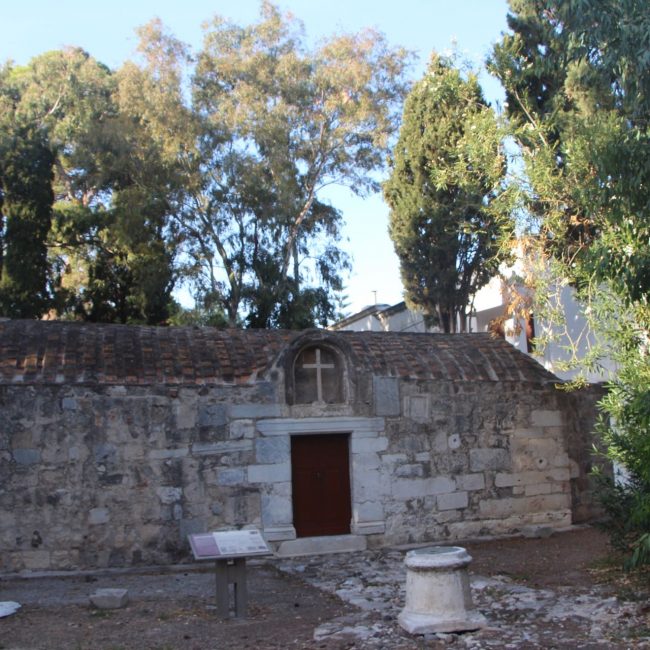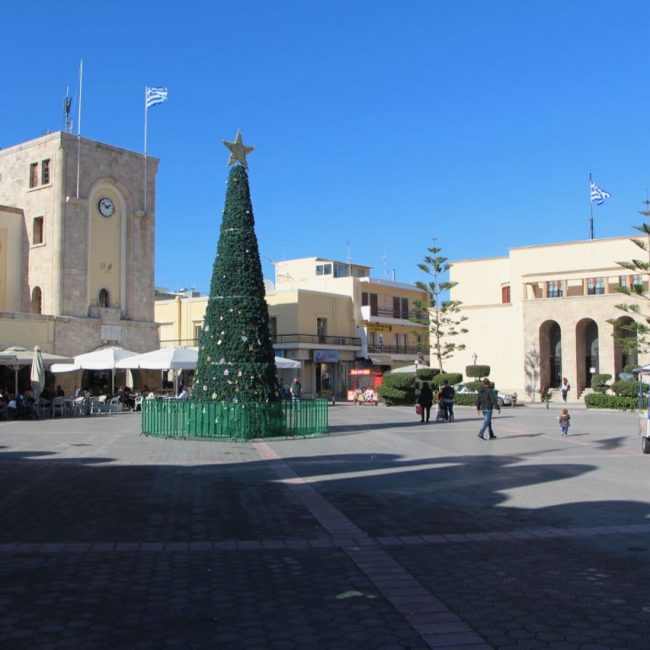The Church of Saint George tou Arrenagogeiou (of the Boys’ School – Αγίου Γεωργίου του Αρρεναγωγείου) is located at the limits of the fortified town of Kos (Hospitaller burg), in the neighbourhood later known as Chora, and dates from the late Byzantine period. The church was one of the few buildings to survive the catastrophic earthquake that struck Kos on the feast day of Saint George, on April 23rd 1933, as opposed to the building of the Boys’ School that was destroyed.
Description of the Church
It is a single-aisle church with a semicircular apse (vault), almost square in plan and roofed by a heavy dome. The eight arched windows of the dome, together with the four rectangular ones in the sidewalls, fill the interior with light. The altar table in the bema consists of an inscribed marble plaque and a rectangular marble altar.
On the NE side of the church is the tomb of Archbishop Gerasimos of Kos (1838) and his mother Anthoula, who died in 1811 in the plague epidemic that lasted until 1814 and was known as the “Proto Thanatiko”.
Purpose and use of the Church
In the late 18th century, the Church of Saint George stood in a fenced vineyard with farm-building (apostrophen) and was a dependency (metochion) of the Church of Saint Marina up until the first half of the 19th century and the construction of a new metropolitan church (the pre-earthquake church of Saint Nicholas). It had a large property, owning 14 houses and 3 shops.
From 1842, it contributed, with its income form the vineyard, to the Lancastrian School, a primary school that was run according to the monitorial system, in which older pupils taught the rudiments to the younger ones.
In 1882, when the Arrenagogeion (Elementary School for Boys) was founded, the church was included in the schoolyard and took the appellative Saint George tou Arrenagogeiou. At about this time, responsibility for its care was assumed by the family of primate Antonios Panteloglou, who belonged to the first six-member council of elders (demogerontia), which was appointed in 1843. The church was renovated in 1892 at the expenses of his daughter, Aikaterini, wife of Alexios Thymanakis.
(Source: Ministry of Culture – 4th Ephorate of Byzantine Antiquities)










